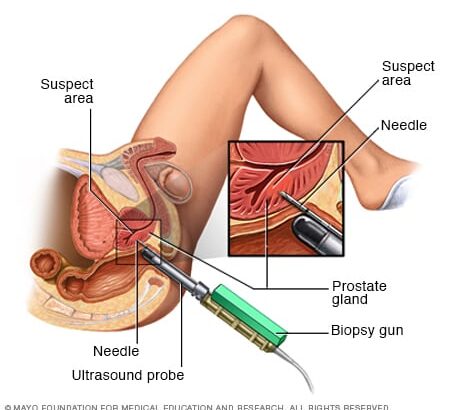
We talked about how PSA is used as a screening tool to find prostate cancer in men who don’t have symptoms in the first part of our series. Although PSA testing can save lives, it frequently identifies cancer that is growing slowly and may not ever cause death. PSA may rise for reasons unrelated to cancer, such as prostate inflammation or a benign enlargement that typically occurs with age. There are longstanding concerns that PSA screening leads to unnecessary tests and overdiagnosis of prostate cancer.
Doctors also measure PSA to check for disease progression in men who have an established cancer diagnosis. But where PSA screening often yields ambiguous findings, using PSA to monitor cancer progression “is one of the most useful tools we have,” says Dr. Marc B. Garnick is the chief editor of the Harvard Medical School Guide to Prostate Diseases and the Gorman Brothers Professor of Medicine at both Beth Israel Deaconess Medical Center and Harvard Medical School. If PSA levels begin to rise in men who are on active surveillance for low-risk prostate cancer, they may require treatment. PSA is also measured by doctors to check for cancer recurrence in men who have already had surgery or radiation. However, there are important differences in the test’s use in these situations.
PSA elevations after surgery
PSA should be undetectable after a man has his prostate surgically removed. That’s because all PSA-releasing cells should have been taken out. If PSA rises during follow-up monitoring, then men have what is called a biochemical recurrence. This indicates that the body still contains cancer cells.
PSA elevations after radiation
Radiation treatments destroy cancer in the prostate, but leave the rest of the gland intact. PSA therefore declines toward what medical professionals refer to as the “nadir,” which is the lowest level achieved following radiation treatment. Ideally, the nadir will be less than 1 nanogram of PSA per milliliter of blood (ng/mL), or preferably less than 0.5 ng/mL. Men who have received radiation treatment are thought to have a biochemical recurrence if their PSA rises by at least 2 ng/mL over the nadir. What follows next? Doctors have traditionally looked for cancer after biochemical recurrence by giving men bone scans and computed tomography scans of the abdomen and pelvis. Men are diagnosed with nonmetastatic prostate cancer if scans reveal no evidence of metastases. It’s called that because rising PSA reveals cancer that the traditional scans are unable to find.
If the PSA doubles every few years, then such patients can often be followed without need for specific treatments. But if the PSA levels double more rapidly, say every six to eight months, “then we get concerned,” Dr. Garnick says. This example illustrates how PSA kinetics —the rate of PSA change over time — can play a very important role in helping doctors determine if there’s a need for additional treatment.
Changes in treatment Men with biochemical recurrence are now being examined for cancer with a new test in recent years. The test scans for a protein called prostate-specific membrane antigen (PSMA) that most prostate cancer cells have on their surfaces. The first step for doctors is to administer an intravenous tracer that moves through the bloodstream to locate and adhere to PSMA. The tagged cells, which glow like lit matches in a dark room, can be pinpointed using specialized imaging methods. PSMA is valuable because it can detect tiny metastases that are still too small to see with traditional imaging methods.
Doctors measure PSA every three months or so to evaluate how well treatments for metastatic cancer are working. If the levels fall or stabilize, then the treatments are effective. It used to be that all men with metastatic prostate cancer got lifelong treatment, but therapies are steadily improving. Today, long-term treatments can be suspended — sometimes indefinitely — “if PSA remains consistently undetectable and the metastases are no longer visible,” Dr. Garnick says.
PSA is also crucial for evaluating experimental therapies for very advanced forms of prostate cancer. Such therapies can include new drugs or drug combinations that haven’t yet been approved by the FDA. Dr. says, “A significant drop in PSA of at least 50% is considered a positive indicator of treatment response.” Garnick asserts. “PSA monitoring continues to be one of the most important evaluations that physicians and clinicians can perform to determine the best treatments for men with prostate cancer.”



